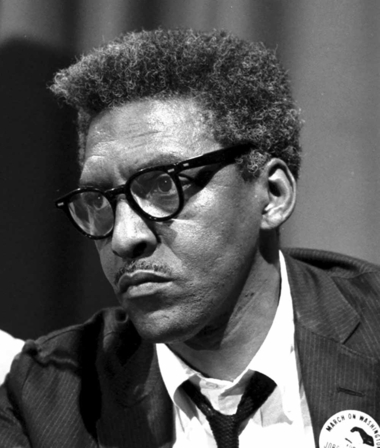Digging a little deeper into Black History

by Rob Howard
Political Columnist
Each year we observe Black History month, and each year we hear a lot about Martin Luther King, Jr., and other outstanding African American leaders in the fight for civil rights. Sometimes, we hear about Bayard Rustin, a gay black leader – but all we usually hear about him is that he was one of the primary organizers of the 1963 March on Washington. Most of us know nothing about his earlier life.
What we almost never hear about is the contribution of LGBT persons, both black and white, who were involved in advancing the cause of civil rights. So it was with great delight that I discovered a PhD dissertation by Jared E. Leighton, titled Freedom Indivisible: Gays and Lesbians in the African American Civil Rights Movement. Dr. Leighton’s dissertation won the University of Nebraska – Lincoln’s Folsom Distinguished Doctoral Dissertation Award for excellence and creativity in dissertation research and writing.
And it’s no wonder he received that recognition. This is a gem of a book, and while it is apparently available only online, it is a great resource. It studies “the role of sixty gay, lesbian, and bisexual persons in the African American civil rights movement in the pre-Stonewall era.” And since, given the bias of those times against blacks and LGBT people, Leighton notes that many of them were not out at the time, and discusses that the lessons learned in the movement went on to inform their later work in the LGBT rights movement.
So, with a great thank you to Dr. Leighton for his work, here are just a few of these LGBT workers for justice, and contributions to Black history.
I’ve already mentioned Bayard Rustin and his work on the March on Washington. But beyond that, Rustin was a conscientious objector during World War II, was in prison for a year because of it, and had been a Communist. Rustin and his white gay Jewish roommate, Igal Roodenko, were two participants in a test of segregation in interstate travel in 1947.
Called the Journey of Reconciliation, two groups rode Greyhound and Trailways busses in the upper South. Rustin and Roodenko were arrested and jailed in Chapel Hill, NC. The Journey of Reconciliation paved the way for the Freedom Rides of 1961, according to Leighton.
Anna Pauline (or Pauli) Murray understood herself as “a male-identified woman who loved other women.” She was never open about her sexuality. “She would become an instrumental figure in a variety of contexts as a civil rights activist, a founder of the National Organization of Women and forerunner in advancing gender equity in the Episcopal priesthood. But, one of her most important contributions was in contributing to the case made for desegregating schools in Brown v. Board of Education,” says Leighton.
Murray, after completing her law degree at Howard University, compiled a massive document that summarized racial discrimination statutes in every state. It was published as States’ Laws on Race and Color (1951); the ACLU distributed a thousand copies to attorneys and groups to use in desegregation cases. “Thurgood Marshall identified this document as integral to his preparation to issue the Brown decision calling it ‘the Bible’ of segregation laws,” wrote Leighton. And, he adds, “Murray would later use this court strategy she helped pioneer in the 1950s in the fight against sex discrimination in the 1960s.”
In 1955, Bayard Rustin was sent to Montgomery, AL, to assist in the bus boycott touched off by Rosa Parks’ refusal to give up her seat to a white person. The boycott was headed by Martin Luther King, Jr. It was during this time in Montgomery that Rustin introduced King to the concept of non-violence, with which he had, until then, only a passing familiarity.
Malcolm Boyd, a white gay Episcopal priest took part in the 60s era Freedom Rides as part of the Episcopal Society for Cultural and Racial Unity. After several riders were arrested in Jackson, MS, Boyd announced that the Freedom Ride would continue to Tennessee.
Boyd is most known by LGBT people as a ground-breaking activist, being among the first prominent clergymen in America to acknowledge his homosexuality publicly, according to a New York Times obituary when Boyd died last year at 91.
The Times continued, “Father Boyd later stunned his church and a wide following by disclosing in 1976 that he was gay, then wrote extensively about his liberation. He went on to fight for the ordination of women and homosexuals in the Episcopal Church, a goal that was achieved, and for programs to help growing legions of homeless people and AIDS victims.”
These are only a few of the sixty LGBT people that Leighton writes about in his dissertation. But these stories show the impact of both black and white LGBT persons in the fight for racial equality, and an end to the legacy of Jim Crow laws. The work goes ‘way beyond the usual scratching of the surface when journalists write columns recognizing Black History Month.
To read more of the people and issues that Leighton writes about, visit his dissertation at www.tinyurl.com/zedhxfo.
The Gayly - 2/23/2016 @ 5:47 p.m. CST





